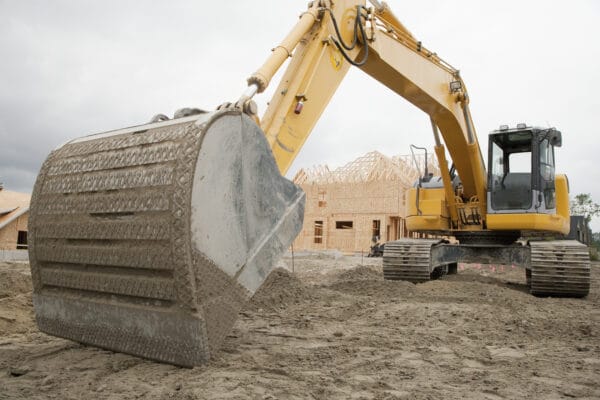Belfiore Consulting: Opportunities, challenges abound for financing infill projects around the Valley. “[B]uilders with the best thought-out communities, the most thorough and intimate knowledge of their buyers’ needs and wants, an understanding of their competition, and realistic pricing and absorption models are successfully attaining financing… Others are struggling…” More from Jim Belfiore, president of Phoenix-based Belfiore Consulting, in PBJ. (And don’t miss Jim’s comments below, on the ‘Arizona housing industry.’) http://bit.ly/2ntkXqd
How redevelopment puts Phoenix arts districts in a vicious cycle. “[Roosevelt Row] was named one of the ‘Great Places in America’ by the American Planning Association… But… what made the arts district so attractive at first has now, in a way, ruined its reputation. ‘All those artists are leaving, because of what happened to Roosevelt. It disappeared… They’re just being pushed out….” And where are they heading, an area that “[m]any artists and developers see… as the saving grace”? Find out, in Phoenix Business Journal. http://bit.ly/2orbY6f
Downtown Tucson proving to be a model for redevelopment. “Look back 20 back years ago, and the primary impression of downtown Tucson is an image of boarded-up buildings and homelessness. Today is a much different story. Downtown has turned into a place of purpose for people to work, live and enjoy themselves. It’s a destination for entertainment and once again an active part of the city, proving revitalization is possible for any community.” More on downtown Tucson’s turnaround, in Arizona Capitol Times. http://bit.ly/2o2SAAu
Arizona housing industry flourishing again, but not where it was pre-recession; Jim Belfiore provides perspective. “[A] ‘new normal’ has… emerged… in which the state is recovering, albeit at a slower pace compared to previous recoveries, even as the construction industry is struggling to regain its footing.” — Arizona Capitol Times. Jim Belfiore: “The housing market continues to improve slowly. Employment and population growth are contributing to household growth but an outsized portion of that growth has been in the rental market, as households slowly rebuild credit and save down-payments. We expect this trend to continue, as the homeownership rebounds over the next 5 years.” http://bit.ly/2o2WHN1
Report: same old story for inventory. (Perhaps RISMedia should have titled this piece “The same old inven-story.”) “Housing inventory hit a new low in the first quarter of 2017, bottoming out from the early days of the recovery from the recession, according to Trulia’s recently released quarterly Inventory and Price Watch.” For a “Starter Home… shrinkage” breakdown and what Trulia chief econ Ralph McLaughlin has to say about the “inventory gridlock,” tap it: http://bit.ly/2nFbaxA
A tale of two housing markets; take a look at Arizona. “February sales of existing homes [fell] 3.7 percent from January… the decline attributed to a shortage of homes for sale.” Inman contributing financial writer, Lou Barnes, pooh-poohs this lead with a “Blah, blah, blah,” adding that it “could be the first paragraph of any national housing report in the last five years.” So Barnes digs “deeper,” looking to “shed some descriptive light” on how “[w]e have become a nation of two economies, two sets of politics, and heaven knows, two housing markets.” http://bit.ly/2mJcf8mSluggish housing recovery took $300 billion toll on U.S. economy, data show. “If the home-building industry had returned to the long-term average level of construction, it would have added more than $300 billion to the economy last year, or a 1.8% boost to gross domestic product, according to a study expected to be released Monday…” Check it out in The Wall Street Journal. http://bit.ly/2nYVO7D
Renters now rule half of U.S. cities. “Fifty-two of the 100 largest U.S. cities were majority-renter in 2015, according to U.S. Census Bureau data compiled for Bloomberg by real estate brokerage Redfin…. [And] there are reasons to think the trend toward renting will continue.” —> http://bit.ly/2o31Kgw
Phoenix consultancy: Apartment boom, measured in construction cranes. The results are in for the “Crane Index”! The “biannual survey of crane activity by Rider Levett Bucknall North America, a Phoenix-based construction consultancy,” reveals that “Chicago has the most cranes working on residential construction projects.” And the city that “came in second,” where “nearly all of the new residential construction is for luxury rentals“? Find in the WSJ. http://bit.ly/2n9Vf6B
Cameron’s $5M + deals of the day – http://bit.ly/2no52ru

As a supplement to the Dealmaker, we thought you might enjoy these articles!
Controversy over large-scale water pumping by foreign-owned farms reaches Arizona Capitol; Rose Law Group land use and water attorney Thomas Galvin testifies. (Disclosure: Rose Law Group represents Fondomonte Farms.) “[HB2520] brought to the fore a controversy over water use and conservation, laws and regulations favorable to agriculture… During the hearing on HB2520, Thomas Galvin [said that Fondomonte Farms is an] economic powerhouse for La Paz County… [The company] has invested $118.4 million, provides about $277,000 each year in tax revenues, employs 116 workers, making it the seventh largest employer in the county, and supports about 360 jobs in the region.” More at Arizona Capitol Times. http://bit.ly/2nYOzg4
Recovering attorneys’ fees not automatic. By David McDowell, partner and director of Rose Law Group Litigation Department. “Receiving a judgment in your favor at trial does not automatically make you the prevailing party for the purpose of recovering your attorneys’ fees under the recently decided Arizona Supreme Court case of American Power Products, Inc., v. CSK Auto, Inc. On March 23, 2017, the Arizona Supreme Court issued an opinion which many claim turns the definition of prevailing party on its head…. This case poses traps for both litigators and contract drafters alike.” http://bit.ly/2nFB8Rz
Planned sports facilities plentiful in the Valley. “Major owners and developers of sports and entertainment facilities, including Attesa Motor Sports, ASU Athletic Facilities District and Phoenix Rising will highlight their upcoming projects at the AZBEX Phoenix Metro Development Summit on Tuesday, April 18th.” Get a preview of the event along with links for the “full program,” a list of speakers, and registration info — at AZBEX. http://bit.ly/2na1uqS
State disputing local control of fringe benefits. “Assistant [AG] Rusty Crandell, writing on behalf of [AG] Brnovich, is trying to preserve a 2016 measure… to block local governments from telling private companies everything from how much time off they will offer workers to vacation mandates and even how far ahead of time workers need to be told of schedule changes.” Capitol Media Services Howard Fischer reports, at Arizona Daily Sun. http://bit.ly/2nZ1wqh
Republicans Biggs, Gosar help sink ‘Obamacare’ repeal. “House Speaker Paul Ryan pulled the American Health Care Act without a vote as it became clear the House Freedom Caucus… maintained more than enough ‘no’ votes to sink the measure…. Freedom Caucus [members]… Republican Reps. Andy Biggs and Paul Gosar, said in recent days that the bill was insufficiently conservative.” AZCentral. http://bit.ly/2or6k4m
Pharma company that spent $500,000 trying to keep pot illegal in Arizona just got DEA approval for synthetic marijuana. “[Insys Therapeutics]… opposed… legalization… because ‘it fails to protect the safety of Arizona’s citizens, and particularly its children.’” Meanwhile: “[A] spokesman for [the]… legalization campaign said of Insys last year… ‘It appears they are trying to kill a non-pharmaceutical market for marijuana in order to line their own pockets…” Details on the DEA’s approval of “Syndros”, plus info on the “numerous state and federal criminal investigations” involving Insys, in The Washington Post. http://bit.ly/2mJyxqG
Scorching Phoenix may be out of position to deal with climate change. “[A] future… even hotter and drier, the monsoons more mercurial. [H]ighs could reach 130…” This LA Times piece paints a rather dire picture about “the future habitability of Phoenix.” But Mayor Greg Stanton says that while “sound[ing] the appropriate level of alarm” is important, “you don’t want to… scare off investment…” (This Times article reports that we “face… a reckoning,” with “daunting predictions” and ”few resources with which to prepare,” leaving “[p]ublic health and economic prosperity… both at risk.” Does that sound to you like an “appropriate level of alarm”?) http://bit.ly/2oa842k
Elon Musk’s billion-dollar crusade to stop the A.I. apocalypse. “Silicon Valley’s latest rush to embrace artificial intelligence scares [Elon Musk]. And he thinks you should be frightened too. Inside his efforts to influence the rapidly advancing field and its proponents, and to save humanity from machine-learning overlords.” Vanity Fair. http://bit.ly/2o2XJbM
|







